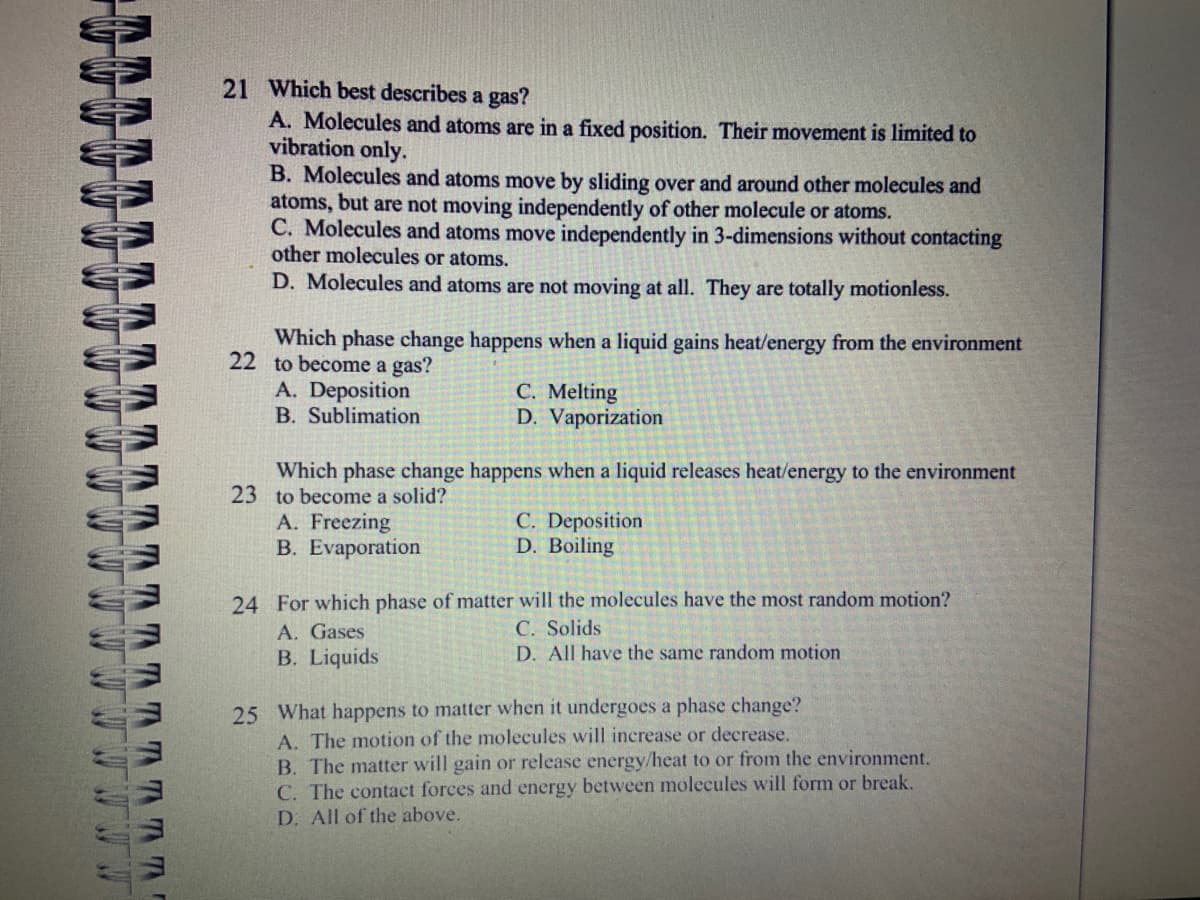21 Which best describes a gas? A. Molecules and atoms are in a fixed position. Their movement is limited to vibration only. B. Molecules and atoms move by sliding over and around other molecules and atoms, but are not moving independently of other molecule or atoms. C. Molecules and atoms move independently in 3-dimensions without contacting other molecules or atoms. D. Molecules and atoms are not moving at all. They are totally motionless. Which phase change happens when a liquid gains heat/energy from the environment 22 to become a gas? A. Deposition B. Sublimation C. Melting D. Vaporization Which phase change happens when a liquid releases heat/energy to the environment 23 to become a solid? A. Freezing B. Evaporation C. Deposition D. Boiling 24 For which phase of matter will the molecules have the most random motion? C. Solids A. Gases B. Liquids D. All have the same random motion 25 What happens to matter when it undergoes a phase change? A. The motion of the molecules will increase or decrease. B. The matter will gain or release energy/heat to or from the environment. C. The contact forces and energy between molecules will form or break. D. All of the above.
Ideal and Real Gases
Ideal gases obey conditions of the general gas laws under all states of pressure and temperature. Ideal gases are also named perfect gases. The attributes of ideal gases are as follows,
Gas Laws
Gas laws describe the ways in which volume, temperature, pressure, and other conditions correlate when matter is in a gaseous state. The very first observations about the physical properties of gases was made by Robert Boyle in 1662. Later discoveries were made by Charles, Gay-Lussac, Avogadro, and others. Eventually, these observations were combined to produce the ideal gas law.
Gaseous State
It is well known that matter exists in different forms in our surroundings. There are five known states of matter, such as solids, gases, liquids, plasma and Bose-Einstein condensate. The last two are known newly in the recent days. Thus, the detailed forms of matter studied are solids, gases and liquids. The best example of a substance that is present in different states is water. It is solid ice, gaseous vapor or steam and liquid water depending on the temperature and pressure conditions. This is due to the difference in the intermolecular forces and distances. The occurrence of three different phases is due to the difference in the two major forces, the force which tends to tightly hold molecules i.e., forces of attraction and the disruptive forces obtained from the thermal energy of molecules.

Step by step
Solved in 3 steps with 2 images









